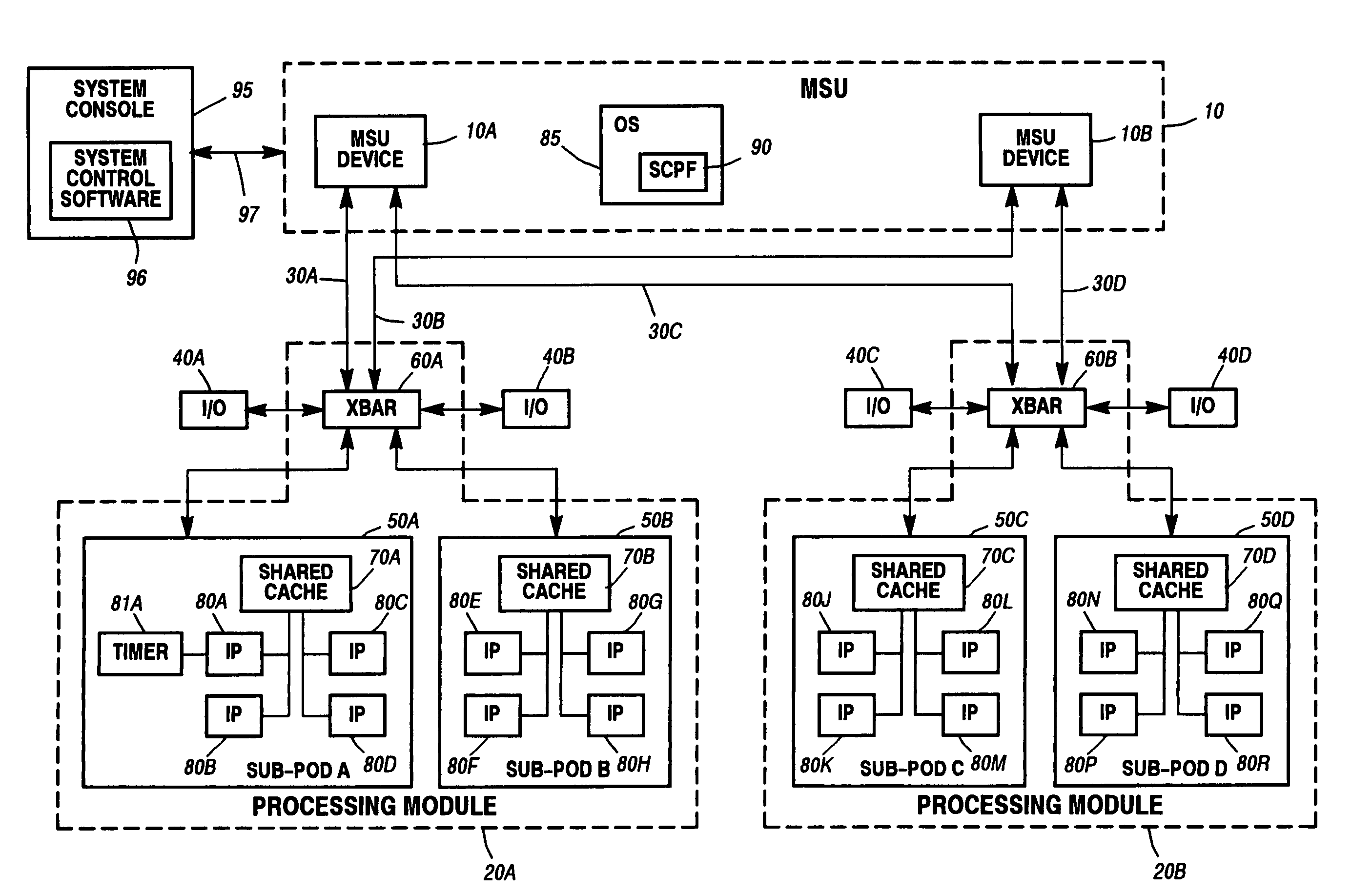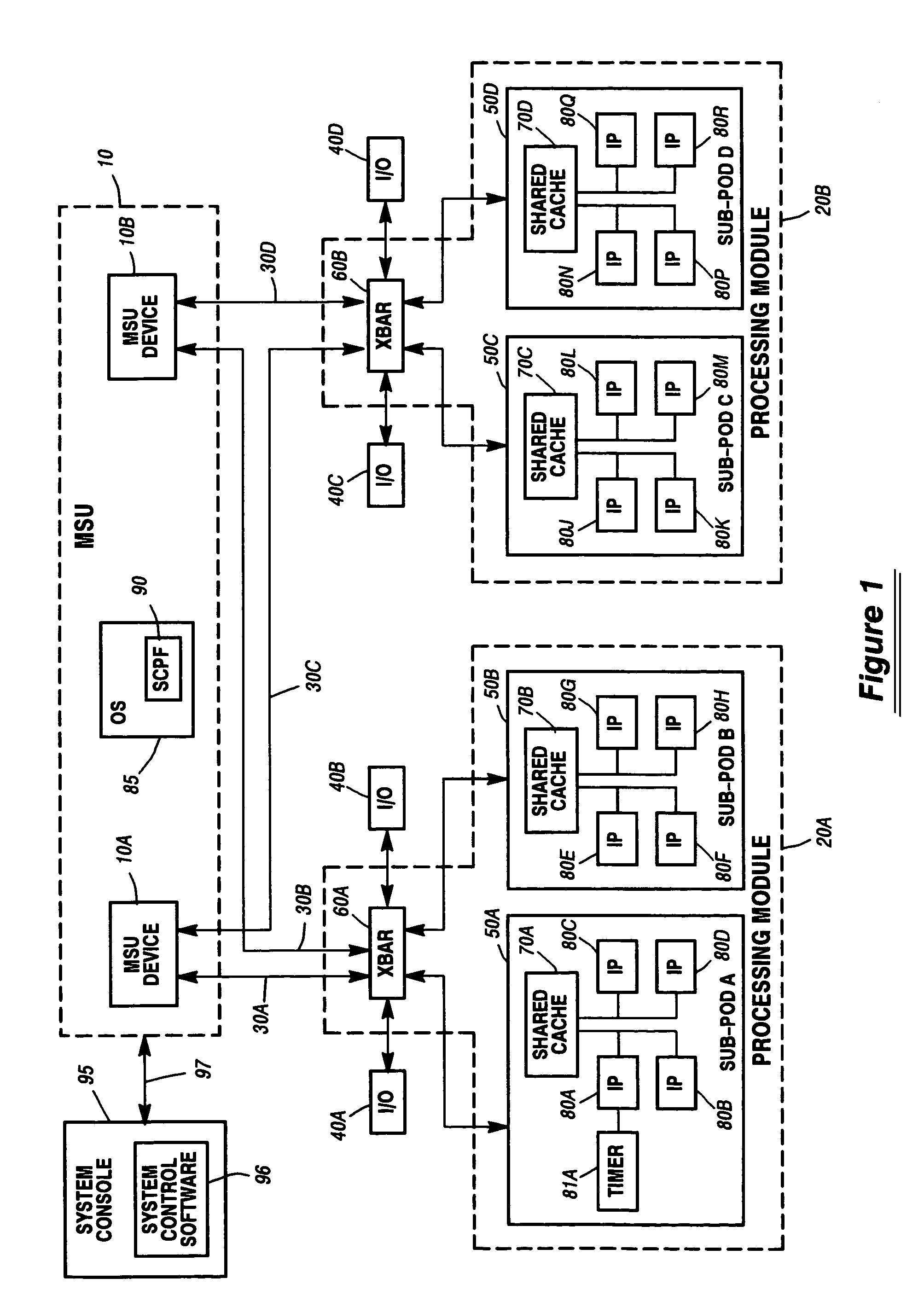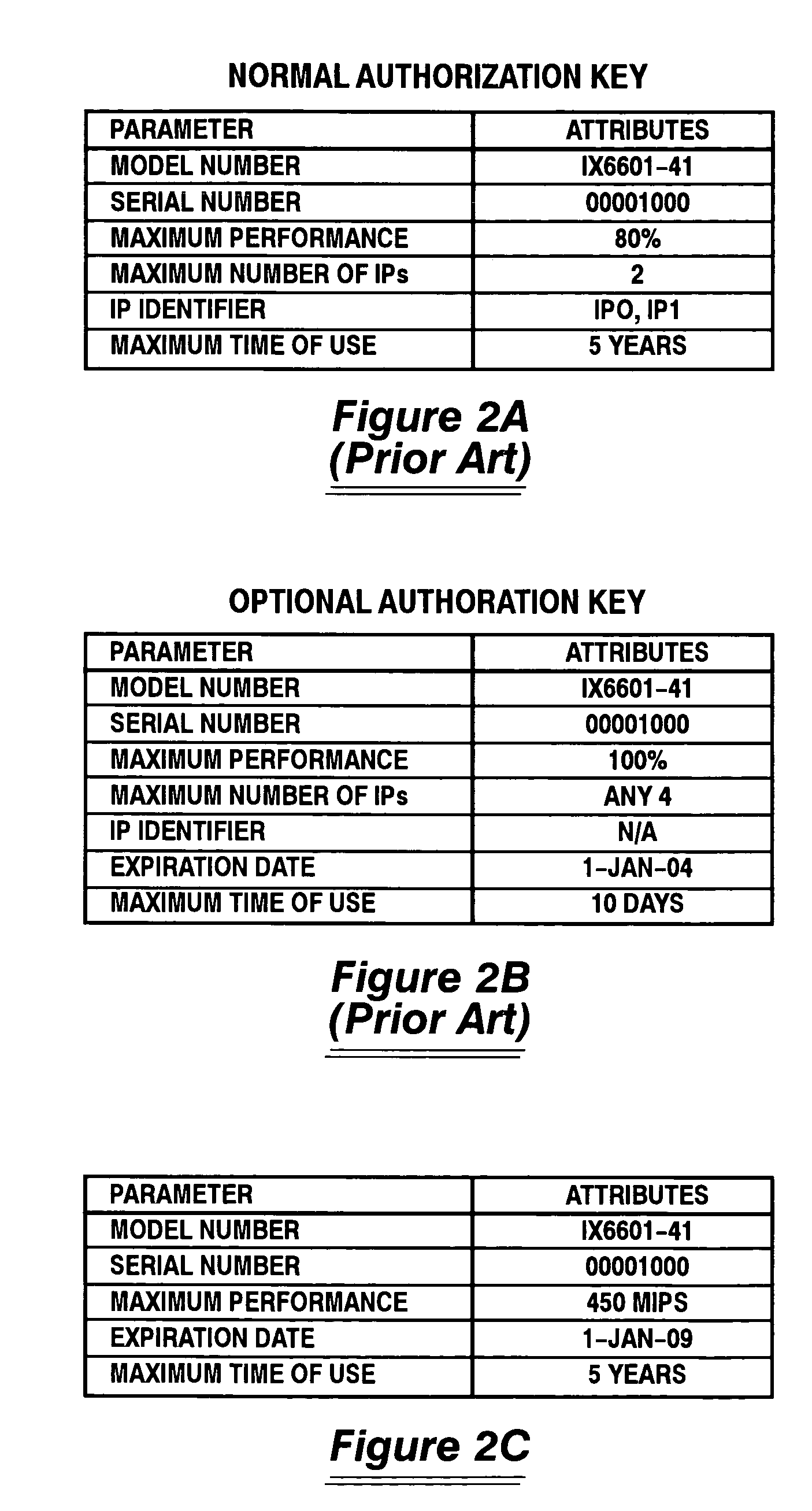System and method for scaling performance of a data processing system
a data processing system and scaling technology, applied in the field of data processing systems, can solve the problems of exceeding the processing power of the available computer resources, and the time it takes to process the data is short, and the processing power required to handle is not enough
- Summary
- Abstract
- Description
- Claims
- Application Information
AI Technical Summary
Benefits of technology
Problems solved by technology
Method used
Image
Examples
Embodiment Construction
[0039]FIG. 1 is a block diagram of an exemplary system that may employ the current invention. This system includes a Memory Storage Unit (MSU) 10 (shown dashed) which provides the main memory facility for the system. The MSU includes one or more MSU devices individually shown as MSU 10A and MSU 10B, which each contains a predetermined portion of the memory space of the system. Many more MSU devices may be included within a full configuration.
[0040]The system further includes Processing mODules (PODs) 20A and 20B (shown dashed), which provides the processing capability for the system. A greater or lesser number of PODs may be included in the system than are shown in FIG. 1. In one embodiment, up to four PODs are included in a fully populated system.
[0041]Each of the PODs is coupled to each of the MSU devices via a dedicated, point-to-point connection referred to as an MSU Interface (MI), individually shown as MIs 30A through 30D. For example, MI 30A couples POD 20A to MSU device 10A,...
PUM
 Login to View More
Login to View More Abstract
Description
Claims
Application Information
 Login to View More
Login to View More - R&D
- Intellectual Property
- Life Sciences
- Materials
- Tech Scout
- Unparalleled Data Quality
- Higher Quality Content
- 60% Fewer Hallucinations
Browse by: Latest US Patents, China's latest patents, Technical Efficacy Thesaurus, Application Domain, Technology Topic, Popular Technical Reports.
© 2025 PatSnap. All rights reserved.Legal|Privacy policy|Modern Slavery Act Transparency Statement|Sitemap|About US| Contact US: help@patsnap.com



